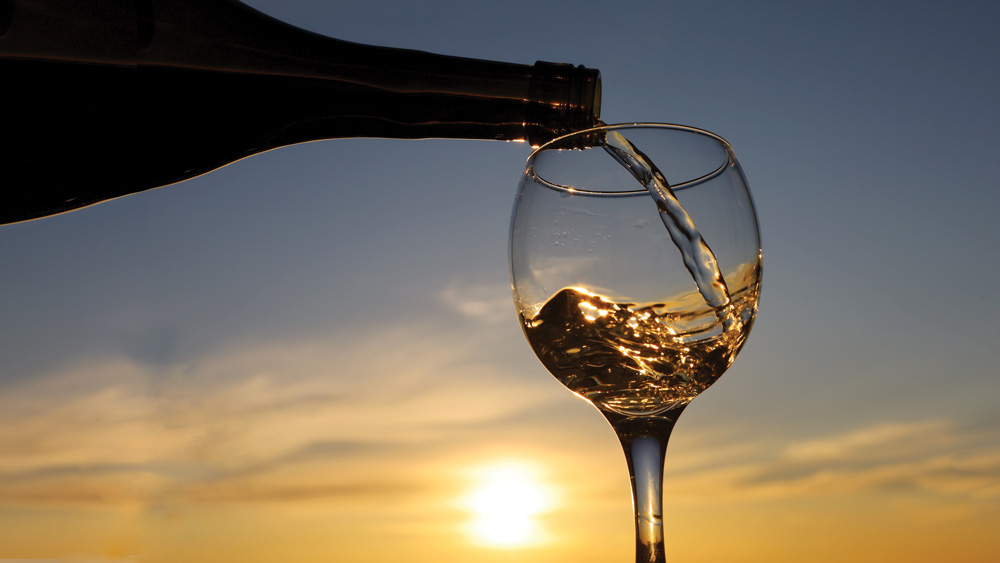
What is luxury wine? “Luxury wine is of the highest quality, coming from a special place on earth, has an element of scarcity, an elevated price, and provides a sense of privilege and pleasure to the owner,” writes Liz Thach and Peter Yeung in their book, Luxury Wine Marketing: The art and science of luxury wine branding. Thach, a highly-accomplished professional with a Ph.D. in human resource development has a passion for wine and the wine lifestyle, and is also an award-winning author and educator, specializing in wine business strategy, marketing and leadership/executive development.
Thach, who is based in Napa and Sonoma County, fell in love with wine as a college student after a classmate from Notre Dame de Namur brought her wine tasting in the Napa Valley. After her wine-tasting experience, she started taking classes and vacations to places where wine is made starting with France, Italy and Germany. The world of wine opened up even more when she passed the Master of Wine (MW) exam, becoming the first woman in California, and the seventh woman in the U.S. to achieve the prestigious designation of MW. MWs are equipped with a comprehensive range of practical and theoretical knowledge which enables them to work across all disciplines within the wine industry, from viticulture and winemaking through to shipping, retailing and writing. Thach’s passion has now taken her to more than 50 countries, where she has explored most of the major wine regions of the world.
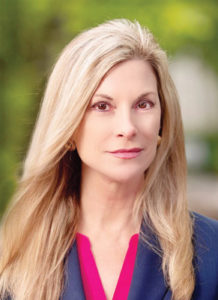
Last year at the annual North Coast Wine Industry Expo (WIN Expo), the largest trade show and conference focused exclusively on Napa, Sonoma, Mendocino and Lake counties, and the second-largest wine industry show in North America, it was mentioned that the price point for luxury Chardonnay was rising and that luxury Chardonnay was “hot.” Thach says that sales of luxury chardonnay have been rising for about eight years. Once the economy started recovering after the 2008 recession, the premiumization trend started picking up speed. “Especially during COVID, people drank more wine. The wealthy started dipping into their cellars and drinking luxury wine, enjoying life today and purchasing more wine, too,” says Thach. Restaurants were closed during the height of the pandemic, so wine drinkers were buying nice wine from retail shops online, and some high-end retailers were selling $300 bottles of wine on a regular basis. In 2020, wine.com had their best year ever, propelled by the luxury wine craze. Now with a possible impending recession, there could potentially be a slow down with the sale of high-end wine, but so far that has not been the case in the sales numbers. “It is possible that we could see a little bit of a downturn in the luxury trend if there’s a recession,” says Thach, but notes that the ultra rich, the top 1%, will never stop drinking luxury wine so there will always be a market for luxury wines.
Generally speaking, about 75 percent of wine sold in the U.S. is $10 a bottle or less, but higher priced wines have become more popular, likely due to a number of factors including older Millennials in their 30s and 40s feeling that wine is part of a good life experience. Many Millennials enjoy learning about wine and trying new wines and have more money that they are willing to spend on luxury items. In the United States, Chardonnay is the No. 1 most popular wine sold by volume, with Cabernet Sauvignon being the second. The most expensive white wine in the world is Chardonnay, known as White Burgundy in Europe, with some White Burgundies selling for as much as $18,000 a bottle.
These days, no other white grape approaches Chardonnay’s total acreage in Sonoma County. According to the 2021 Grape Crush Report, Sonoma County growers receive the state’s second-highest price for their Chardonnay grapes, indicating both high demand and quality. Many high end Chardonnays are made from grapes grown in the Russian River Valley. Chardonnay is the most planted grape of the Russian River Valley AVA and accounts for about half of the grapes that grow there. There are also many great Chardonnays made from grapes grown in Napa Valley, too, where Chardonnay is the second most planted grape variety, and grows with particular success in the calcium-rich soils and cool climate of the Los Carneros AVA, where it can ripen slowly. Luxury Chardonnays differ from their lower-priced siblings, mostly based on where their grapes are grown, the attention the grapes receive while on the vine, and the care with which the wine is made. Many luxury Chardonnays have almost cult-like followings that are based on a long reputation of heritage, consistency and excellence. Though there are many available in Wine Country, here’s a look at a few well-known local Chardonnays and the history behind them.
An immigrant’s success in the Russian River Valley
The family legacy of Rochioli Vineyards started in 1911 when current winemaker Tom Rochioli’s grandfather, Joe Rochioli Sr., immigrated from Italy as a child with his parents. The family made their way to the Russian River Valley where Joe Sr. worked as a ranch foreman. Joe Sr. considered himself a crop farmer, cultivating land that was dedicated to growing hops, prunes and string beans with grapes just a small part of what he was farming. By the midHe was able to purchase the property in the early 1950s. Joe Sr. passed in 1966, and in the early 1970s, his son, Joe Jr. purchased the property, where Rochioli Vineyards stands today. As a child, Tom watched his grandfather and father tend to the land and started helping out when he was seven years old picking prunes. In 1968, his father started planting Pinot Noir vines and shortly after, in 1972, started planting Chardonnay. The family built their winery in 1985 and sold their first Estate Chardonnay under their own label in 1986.
In a region that is ideal for Chardonnay and Pinot Noir, with early morning coastal fog and warm summer days, Rochioli was one of the earlier vineyards in the area that planted Chardonnay and now has about 35 acres of Chardonnay vineyards that produce 2,000 to 2,500 cases each year. Each bottle of high-end, terroir-driven wines made from a foundation of superb fruit sells for between $60 to $80. When asked what draws people to Chardonnay, Tom says, “Once people start to understand it, they understand it’s a noble variety. As consumers become more educated about Chardonnay and taste the complexities, especially when aged properly, they realize that it is a serious wine.” In addition to making their own Chardonnay, Rochioli also sells their Chardonnay grapes to Gary Farrell Vineyards and Winery, Ramey Wine Cellars, Williams Selyem Winery, Donelan Family Wines and Longboard Vineyards who in turn also make luxury Chardonnay from Rochioli grapes.
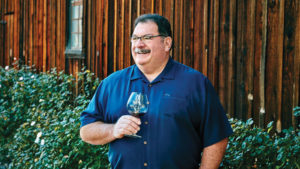
One of the things that draws people to Rochioli Chardonnay is the wine’s solid reputation. “People have a tendency to trust history and consistency,” says Tom. Though Chardonnay is ready to drink when it’s released, unlike some red varietals, there are people who prefer to cellar their Chardonnay. A high-end Chardonnay can usually be cellared for eight to 10 years. “The older luxury Chardonnays have a lot going on in the glass that can make them rich and interesting and more complex with age,” says Tom, with some vintages aging better than others. As it ages, Chardonnays will change color, often going from green, to gold and a deeper gold, and becoming a little rounder and fuller. Most of their wines are sold quickly, because they are a rare item. For their single-vineyard program, buyers must be a member and the wines are highly sought after—their customers buy it all when it becomes available. Most of their production, 70%, is direct-to-consumer, and the remainder is sold through normal channels such as through distributors and a national wholesaler.
Joe Jr. passed away in August at 88 after spending most of his life invested in wine and the Healdsburg area, leaving behind a family legacy that continues on through his son, Tom, as well as Tom and his wife Theresa’s two adult children, who’ve also joined the family business.
Single clone Chardonnay house
Kistler Vineyards’ first vintage of Chardonnay was produced in 1979. Though they use a single, proprietary clone of Chardonnay to make wines, they have vineyards in a number of locations, ranging from the Sonoma Coast to Carneros in Napa Valley. All of its sites are based in places known for their perfect conditions, which are excellent for growing this particular white wine grape. In addition to the right temperatures of warm days and cool nights and coastal fog, they pick soils known to produce a grape with flavors and a mouthfeel that are ideal for high end Chardonnay. Even in Napa Valley’s Carneros region, their grapes still get a coastal influence thanks to the San Pablo Bay. The warmer days of all their growing regions ripens and changes the fruit but the various soils of each vineyard greatly affect the flavor, too.
Kistler regularly sells out of the 20,000 to 25,000 cases of wine they produce each year, most of it sold direct-to-consumer. They primarily dry farm, meaning they grow their grapes without adding additional water when possible. By raising grapevines without added water, it forces the vines to be more self-sufficient, sending its roots deeper into the soil to find the water and nutrients that it needs, adding to the end flavor of the grapes. Dry farming does, however, usually result in a lower yield. Though that is what most high-end Chardonnay makers want, less yield but fruit with a higher intensity, which is also why many of them will drop some of the fruit, making the vine concentrate on the clusters that are left. With lower priced Chardonnays, producers can’t afford to drop grapes—they need all of the fruit produced to make wine at their price point. Those who make more expensive Chardonnays can afford to rid their vines of some fruit in order to make the remaining clusters more flavor intense.
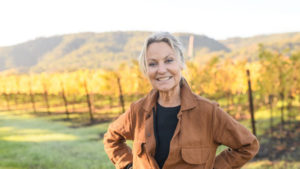
Another characteristic that most makers of luxury Chardonnay share is that they pay a lot of attention to their vineyard, stating that to make a great wine, farming is the most important element. “You can’t make a good wine out of bad fruit,” says Karin Clark, director of marketing at Kistler Vineyards. But as with all winemaking, producing an outstanding wine is part science, part art. Not every Chardonnay drinker prefers the same wines. Choosing the right wine also depends on how you plan to serve it. “High acid wines with a low pH are great with food,” says Clark, adding that their wines pair well with crab, scallops and any white fish and with many sorts of pasta dishes. She recently served a pretty little squash with pasta with a single vineyard Chardonnay to a group of “food” friends who enjoyed the pairing. She also notes that high fat, salty cheese is also delicious with a Chardonnay, that the acid pairs well with the fat and there are many beautiful cheeses made in Sonoma County that are excellent companions to Kistler Chardonnay.
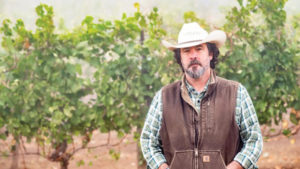
For Kistler’s winemaker, Jason Kesner, it’s about guiding the fruit and it is very much about letting the fruit do what it wants to do. They slow press their Chardonnay grapes and put it right into the barrel, they don’t even stir it. Kistler has been around a long time, in California wine years, and Clark says they were fortunate in the early years that people found them. “It was special to be on the allocation list so people joined,” she says. Kistler devotees enjoyed the texture and beautiful nose and could recognize the label from taste and smell. “People have an affection for our wines. I was at a Wine Spectator event in New York, and I loved hearing the stories from people who reminisced fondly about drinking a wine from a single vineyard or partaking of a vintage that they liked in particular,” says Clark.
Kistler didn’t have a tasting room until 2014, when they opened their winery’s Trenton Roadhouse in Forestville. A number of Cabernet Sauvignon drinkers coming in for a tasting said that they don’t drink Chardonnay. What Kistler staff discovered was that most of those customers didn’t understand Chardonnay, but after a tasting, they found it to be a complex and interesting wine. Kister advises customers new to their list that they should get a few of the same single vineyard chardonnays to drink at different intervals. They suggest drinking one right away and then waiting three to six months before opening a second bottle, then opening a while more before trying the third bottle. It gives the customer a chance to experience how the wine changes with time and determine if a customer has a preference for the Chardonnay at a certain stage. Clark says people are spending more time learning about their wines and visiting their tasting room more often. “We have been so fortunate over the years to introduce people to Chardonnay who thought it was a varietal that they weren’t interested in,” says Clark. “There was a phase in the 70s and 80s when Chardonnays were considered fruit bombs that were always ‘oakey and buttery,’ but now wine drinkers realize Chardonnay is not stereotypical,” says Clark.
“The delicate, malleable nature of Pinot Noir and Chardonnay grapes present fascinating possibilities with the types of wine that can be made,” says Kesner. “It’s so easy to leave a mark on them. We’re always searching for ways to do less, to reduce our winemaking influences in order to lessen the imprints we leave and let the sites and our farming guide the wines. It’s hard work but so rewarding in many ways to be focusing on the land, which we’ve always done. It really is all about the vineyards for us and they’re two perfect varietals to showcase that.”
Defined by the Sonoma Coast
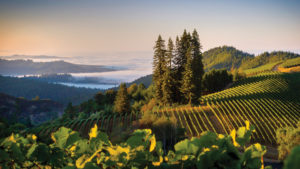
After decades of farming and caring for these exceptional sites, Flowers has unlocked precision and purity of place in the single vineyard estate bottlings. Longtime winemaker Chantal Forthun has worked intimately with the estate vineyards, Sea View Ridge and Camp Meeting Ridge for more than a decade and possesses a deep, intimate understanding of the estate and its incredibly diverse terroir.
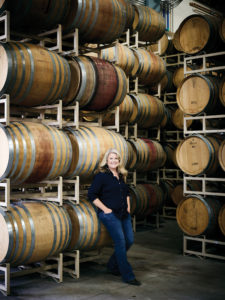
“Coastal regions have so much character and the people that are committed to growing wines from these remote areas have a pioneering spirit,” says Forthun. “Remote nature of the coast and the diverse topography of the land means the area looks a lot different than the Wine Country valley floors that we all recognize. Your neighbors are miles away, which means truly no two properties are the same and your property is unique—you’re more likely to wave to your neighbor from a neighboring ridgetop than a fence line. Most folks have hundreds of acres of land with a very small percentage of property dedicated to vines while allowing the rest to remain wild. Sites must be carefully chosen for the varieties and wines intended because every part of our season is labor intensive. It takes the same amount of people to work land in the middle of nowhere with half the yields our inland neighbors get.”
Flowers’ wines can be purchased through the winery, membership, online and at select fine wine retailers and restaurants throughout the U.S. Their membership offers exclusive access to limited wine releases and experiences at the winery. The House of Flowers hosts intimate events for guests and members, featuring award-winning chefs like Tyler Florence, Alice Waters and Bryant Terry.
“At Flowers, there’s history. Our vineyards were planted in the early and mid-’90s. When we put vines in the ground at Camp Meeting Ridge, only seven others had done so already in the area. It is a privilege to work with these properties and to help usher them into the next phase of their life while protecting the natural balance of the land and maintaining the commitment to making pure wines of place,” says Forthun. As one of the first to plant vineyards along the Sonoma Coast, Flowers is, and has always been, a fabric of the region and will continue to pioneer wine growing and winemaking along the Sonoma Coast.



